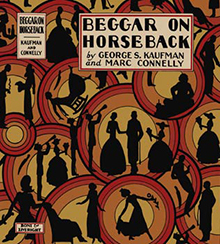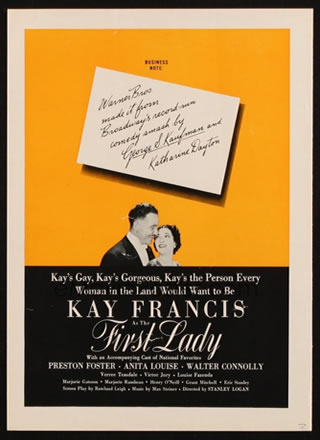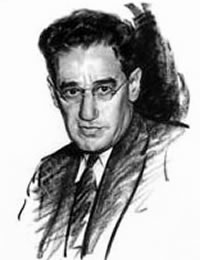The Band Wagon (and other revue material)
(1931)
By George S. Kaufman (with Howard Dietz, Moss Hart, and others)

Throughout his career, Kaufman made a fine art out of the revue sketch, the most popular theatrical form on Broadway in the 1920s and early 1930s. Several of his sketches are absolute classics and they can be singly or as part of a larger evening.
For a selection of Kaufman’s revue sketches, please contact: laurence.maslon@nyu.edu
For separate performance rights:
- “If Men Played Cards as Women Do” – For performance rights, contact: Concord Theatricals
- “The Great Warburton Mystery” – For performance rights, contact: Concord Theatricals
- “Amicable Parting” – For performance rights, contact: Dramatists

Table of Contents
The Plot
“The Pride of the Claghorns” (The Band Wagon)
A Southern gentleman expresses outrage that the girl his son is about to marry is a virgin.
“The Great Warburton Mystery” (The Band Wagon)
In a murder mystery spoof, the culprit is caught by the imprint of his bottom on a seat cushion.
“The Still Alarm” (The Little Show)
A fireman practices his violin while an apartment burns around him.
“If Men Played Cards as Women Do” (The Music Box Revue of 1923)
Four virile men play bridge with a suspiciously feminine line of conversation.
“Local Boy Makes Good” (The Seven Lively Arts)
A stage hand auditions for a Broadway show, claiming he can make more backstage noise than anyone else.
“School for Waiters” (Inside U.S.A.)
Waiters learn how to perfect the art of ignoring customers.
About the Play
Throughout his career, Kaufman made a fine art out of the revue sketch, the most popular theatrical form on Broadway in the 1920s and early 1930s. Several of his sketches are absolute classics and they can be singly or as part of a larger evening. Certainly, they are among the most performed one-act comedies in American history. Several will be featured in Encores! Stairway to Paradise revue in the spring of 2007.
Other Plays in the Catalogue
Be Yourself (1924). Book by George S. Kaufman and Marc Connelly. Music by Lewis E. Gensler and Milton Schwarzwald. Lyrics by George S. Kaufman and Marc Connelly
First Lady opened November 26, 1935 at the Music Box Theatre and ran 246 performances. It was filmed by Warner Bros in 1937. Aside from a 1996 revival at the Yale Repertory Theatre, it has not had a recent first-class production.
Throughout his career, Kaufman made a fine art out of the revue sketch, the most popular theatrical form on Broadway in the 1920s and early 1930s. Several of his sketches are absolute classics and they can be singly or as part of a larger evening.
Table of Contents
Contact Us Today
Interested in bringing George S. Kaufman’s timeless plays to your stage?
Please refer to the contact information for each specific play on the various collection pages for direct amateur and professional licensing information.
Plays are represented by Concord Theatricals, Broadway Dramatic Licensing, and Music Theatre International respectively
If you are interested in first-class performance or film/television rights:
In the US, George S. Kaufman’s plays are represented by:
CPK Artists, LLC
In the UK, George S. Kaufman’s plays are represented by:
Alan Brodie Representation
For more information about George S. Kaufman or this website, contact:
Laurence Maslon
Literary Trustee, George S. Kaufman Estate




